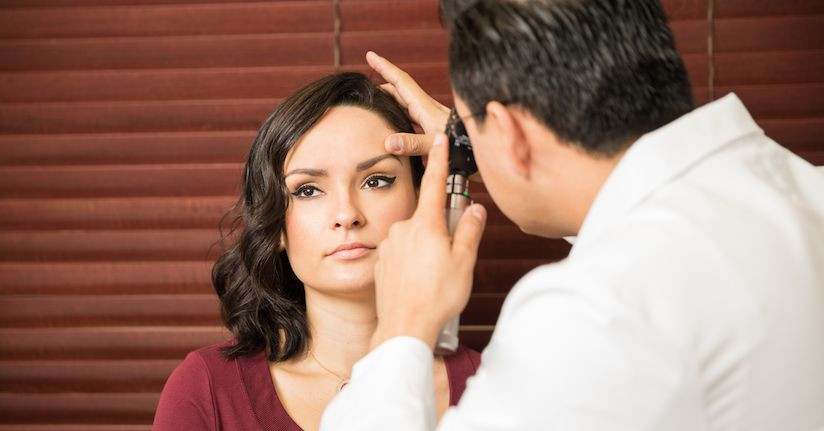7 Questions to Test for Light Sensitivity
How do I know if I am light sensitive or if I have photophobia? Whether due to migraine, post-concussion syndrome or something else entirely, this is a question that millions of patients ask themselves and their doctors at some point—and unfortunately the answer is not always easy to come by. However, it is not impossible either. Based on reliable models that have been used in clinics, these are some of the key questions that can test if you have light sensitivity.
How Did We Develop the Light Sensitivity Test and Questionnaire?
It has long been a challenge to research and test an individual’s light sensitivity; to understand the physiological reactions of light can mean risking pain and other symptoms through direct exposure while questionnaires often rely on the incomplete and sometimes inaccurate recall of patient memory. But researchers and medical professionals have undertaken numerous efforts to create reliable instruments that measure photophobia and light sensitivity. Notably, the Photophobia Questionnaire for Headache Patients (Choi, et al.),[1] the Photosensitivity Assessment Questionnaire,[1] and the Visual Light Sensitivity Questionnaire (Verriotto, et al.)[2] served as guiding examples of the types of diagnostic probing necessary to understand the extent to which a person is light sensitive. We also expanded on these questions based on our own insight and experiences with thousands of light-sensitive individuals.
We also want to remind you that this should not be used for official diagnosis and is not a substitute for the opinions of a medical professional.
Light Sensitivity Questionnaire by TheraSpecs
1. How often do you experience the following symptoms upon exposure to bright or artificial light:
| Never | Rarely | Sometimes | Often | Always |
|---|
Dizziness or vertigo
| Never | Rarely | Sometimes | Often | Always |
|---|
Eye pain, strain or discomfort
| Never | Rarely | Sometimes | Often | Always |
|---|
Blurry or impaired vision
| Never | Rarely | Sometimes | Often | Always |
|---|
General light intolerance
| Never | Rarely | Sometimes | Often | Always |
|---|
Anxiety or angst
| Never | Rarely | Sometimes | Often | Always |
|---|
2. How often do you notice these and/or other symptoms are brought on or worsened by:
| Never | Rarely | Sometimes | Often | Always |
|---|
Flickering or broken lights
| Never | Rarely | Sometimes | Often | Always |
|---|
Car headlights
| Never | Rarely | Sometimes | Often | Always |
|---|
Outdoor glare
| Never | Rarely | Sometimes | Often | Always |
|---|
Screen lighting
| Never | Rarely | Sometimes | Often | Always |
|---|
Sunlight exposure
| Never | Rarely | Sometimes | Often | Always |
|---|
3. On a scale of 1 to 5, please rate your most severe light sensitivity episode in the last 30 days.
| 1 | 2 | 3 | 4 | 5 |
|---|
4. In your experiences, how often does wearing sunglasses provide enough protection against bright sunlight?
| Never | Rarely | Sometimes | Often | Always |
|---|
5. How regularly do you wear sunglasses indoors to cope with bright or artificial light?
| Never | Rarely | Sometimes | Often | Always |
|---|
6. How often do you prefer rooms that are in semi- or complete darkness to find relief from light?
| Never | Rarely | Sometimes | Often | Always |
|---|
7. How often has concern over light exposure:
| Never | Rarely | Sometimes | Often | Always |
|---|
Limited your usage of a computer or mobile device
| Never | Rarely | Sometimes | Often | Always |
|---|
Kept you from visiting stores or shops with fluorescent or artificial lighting
| Never | Rarely | Sometimes | Often | Always |
|---|
Impaired your ability to drive during the day or at night
| Never | Rarely | Sometimes | Often | Always |
|---|
Led to absence(s) at work and/or impaired your job productivity
| Never | Rarely | Sometimes | Often | Always |
|---|
Prevented you from attending outdoor events
| Never | Rarely | Sometimes | Often | Always |
|---|
What to do next?
If you believe that your answers indicate that you may have sensitivity to light, then you should discuss it with your doctor who may be able to further validate it as well as identify possible causes and treatment options. In the meantime, you can learn ways to reduce your photophobia by clicking on the button below.
Related Reading:
Signs and Symptoms of Light Sensitivity
The Ultimate Guide to Photophobia and Light Sensitivity
Fluorescent Light Sensitivity: Causes, Symptoms & Solutions
Chronic Dark Adaptation: The Problem with Wearing Sunglasses Indoors
References:
1Wu Y, Hallett M. Photophobia in neurologic disorders. Translational Neurodegeneration. 2017;6:26. doi:10.1186/s40035-017-0095-3.
2Verriotto JD, Gonzalez A, Aguilar MC, et al. New Methods for Quantification of Visual Photosensitivity Threshold and Symptoms. Translational Vision Science & Technology. 2017;6(4):18. doi:10.1167/tvst.6.4.18.
TheraSpecs Glasses for Your Health
Try our therapeutic glasses and get relief for issues triggered by light, such as migraines, headaches, photophobia, concussion symptoms, seizures, eye health, and sleep.





